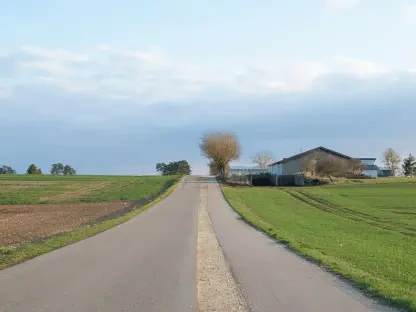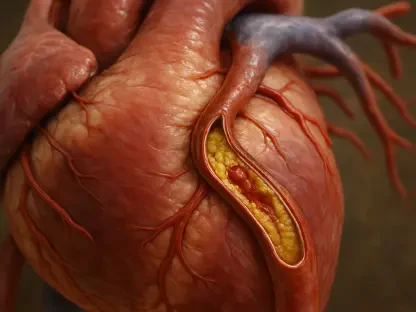Imagine a world where a debilitating condition like Parkinson’s disease becomes the catalyst for extraordinary creativity, where physical limitations are transformed into a canvas of resilience and expression through the inspiring journey of an artist. This is the reality for Andre Hall-Grusska, a 63-year-old artist residing at Riverview Health Centre in Winnipeg. Diagnosed with Parkinson’s at the age of 40, he discovered the healing power of art nearly a decade ago while living in Mexico. Now, his prolific output and inspiring journey are being celebrated through upcoming exhibitions, showcasing not only his talent but also the profound role art plays in managing his condition. His story offers a glimpse into how creativity can serve as both a therapeutic tool and a bridge to community connection, turning personal struggle into public inspiration.
Hall-Grusska’s life at Riverview is a testament to determination, as he has converted his second-floor bedroom into a dynamic studio space. Using an elevated hospital bed as a standing desk to counter the stooped posture caused by Parkinson’s, he dedicates hours each day to crafting intricate symmetrical drawings known as mandalas. Inspired by the surrealist artist Octavio Ocampo, his work transcends mere aesthetics, becoming a lifeline that helps navigate the physical and emotional challenges of his diagnosis. The upcoming showcases, supported by local arts advocates, mark a pivotal moment in his journey, affirming that art can redefine identity beyond the constraints of illness.
Art as a Therapeutic Tool
Managing Physical Symptoms
Hall-Grusska’s artistic process is deeply intertwined with his battle against Parkinson’s, particularly in how it helps manage the physical symptoms that define the condition. His signature mandalas, characterized by mirrored linework and meticulous detail, demand sustained focus and precise hand movements. This act of creation serves as a form of physical therapy, countering the tremors and muscle stiffness that often disrupt daily life. By engaging in repetitive, controlled motions, he channels his energy into patterns that require both mental concentration and physical steadiness, effectively turning a creative pursuit into a mechanism for maintaining motor skills. The time spent drawing—sometimes up to 10 hours a day—becomes a deliberate exercise in control, offering a tangible way to push back against the progressive nature of his condition.
Beyond the immediate physical benefits, this artistic engagement provides Hall-Grusska with a structured way to adapt to his limitations. The process of creating each piece, often using simple tools like Sharpies and stencils, allows him to work within the constraints of his environment at Riverview Health Centre. His hospital bed, adjusted to serve as a desk, accommodates his posture while enabling him to maintain the precision needed for his intricate designs. This adaptation not only aids in managing symptoms like loss of balance but also fosters a sense of agency over a body that often feels unpredictable. The physical act of drawing, therefore, becomes a quiet rebellion against the constraints imposed by Parkinson’s, proving that creativity can be a powerful ally in the face of chronic illness.
Emotional Relief and Purpose
The emotional impact of Hall-Grusska’s art is as significant as its physical benefits, offering a sanctuary of peace amid the relentless challenges of Parkinson’s. Each mandala he creates is a meditative journey, a space where the mind can escape the weight of a progressive diagnosis and find solace in symmetry and order. This creative outlet counters the frustration and isolation that often accompany chronic conditions, replacing them with a sense of calm and fulfillment. The act of drawing becomes a daily ritual of emotional grounding, allowing him to process the uncertainties of his health through the certainty of lines and shapes, transforming inner turmoil into visible harmony.
Moreover, art imbues Hall-Grusska’s life with a renewed sense of purpose, redefining his identity beyond that of a patient. Before turning to creativity, his days were shaped by manual labor jobs that became impossible as Parkinson’s advanced. Now, the hours spent crafting intricate designs fill his life with meaning, turning a hospital room into a realm of possibility. This shift in perspective is vital for emotional well-being, as it allows him to focus on what he can achieve rather than what he has lost. The recognition of his work within Riverview and beyond further reinforces this purpose, reminding him—and others—that a diagnosis does not diminish one’s capacity to contribute meaningfully to the world through art.
Prolific Creativity Amid Challenges
Daily Dedication and Routine
Hall-Grusska’s commitment to his craft is nothing short of remarkable, as he pours countless hours into creating despite the physical toll of Parkinson’s. His daily routine often begins in the early hours, sometimes as soon as 3 a.m., when he feels most alert and capable of focusing. Spending anywhere from 30 minutes to 10 hours on his mandalas, he approaches each piece with unwavering dedication, turning a small hospital room into a hub of relentless creativity. This discipline is not merely about producing art but about maintaining a semblance of normalcy and control in a life altered by illness. His persistence highlights how deeply art is woven into his existence, serving as both a passion and a coping mechanism.
Equally impressive is how Hall-Grusska has adapted his limited space to sustain this rigorous routine. Confined to a long-term care setting at Riverview Health Centre, he has ingeniously transformed an elevated hospital bed into a standing desk to support his stooped posture. A wheeled cart stocked with supplies like markers and templates ensures everything is within reach, minimizing physical strain. This innovative setup reflects a profound determination to create regardless of obstacles, demonstrating that creativity can flourish even in the most constrained environments. His ability to carve out a studio from a clinical space underscores the resilience required to maintain such a prolific output under challenging circumstances.
Transforming Spaces into Galleries
The impact of Hall-Grusska’s work extends far beyond his personal space, as his artwork has turned Riverview Health Centre into a sprawling gallery of inspiration. With over 60 original pieces adorning boardrooms, waiting rooms, and even administrative offices, the facility has become a showcase of his talent, blurring the lines between a care center and an art venue. Each mandala displayed tells a story of perseverance, offering a visual reminder to staff, residents, and visitors alike of the human capacity for beauty amid adversity. This transformation has earned him the unofficial title of artist-in-residence, a role that speaks to the profound influence his creations have on the environment around him.
This integration of art into everyday spaces at Riverview also fosters a unique sense of community engagement with Hall-Grusska’s work. Small exhibitions held within the facility have allowed him to share his pieces directly with those who encounter them daily, creating moments of connection through sales and donations. Visitors and staff often pause to admire the intricate designs, sparking conversations about creativity and resilience that enrich the atmosphere of the center. The presence of his art in such a setting challenges conventional notions of where and how art should be experienced, proving that even a long-term care facility can become a vibrant hub of cultural expression through one artist’s vision.
Community Support and Recognition
Building Connections Locally
Hall-Grusska’s presence at Riverview Health Centre has cultivated a strong local community around his art, creating meaningful connections through his creative endeavors. Over the past few years, small exhibitions within the facility have provided opportunities to showcase his mandalas to staff, residents, and visitors. These events, though modest in scale, have allowed him to sell pieces and donate others, fostering a sense of appreciation and camaraderie. The act of sharing his work in such an intimate setting transforms the often sterile environment of a care facility into a space of warmth and interaction, where art becomes a common language that bridges personal experiences and backgrounds.
This local embrace of Hall-Grusska’s talent has also reinforced his identity as a valued contributor within Riverview. Staff members and fellow residents frequently express admiration for the intricate designs that line the walls, turning routine encounters into moments of shared inspiration. The unofficial title of artist-in-residence bestowed upon him reflects the genuine impact of his presence, as his creations uplift the spirits of those around him. These grassroots connections highlight how art can build micro-communities of support, offering a foundation of encouragement that fuels an artist’s drive to continue creating despite personal challenges like Parkinson’s.
Expanding Reach with Formal Exhibitions
The scope of Hall-Grusska’s recognition has grown significantly through strategic partnerships that have elevated his work beyond Riverview’s walls. Collaborating with the Arts AccessAbility Network, a non-profit dedicated to supporting artists with disabilities, he secured his first arts grant, a milestone that opened doors to formal exhibitions. A one-day show in Riverview’s solarium marked an initial step, drawing attention to his talent within a broader local context. This event, coupled with a planned display at Prairie Theatre Exchange’s lobby, signifies a transition from informal artist to a recognized figure in Winnipeg’s arts scene, amplifying the visibility of his unique story and style.
This expanded platform not only validates Hall-Grusska’s dedication but also aligns with a larger movement toward inclusivity in the arts, ensuring that artists with disabilities have spaces to shine. The support from the Arts AccessAbility Network underscores the importance of institutional backing in helping marginalized creators reach wider audiences. These formal exhibitions serve as a testament to the belief that art knows no boundaries, whether imposed by physical conditions or societal norms. As Hall-Grusska’s work gains traction, it paves the way for future opportunities, reflecting a promising trajectory for both his personal journey and the broader dialogue around accessibility in creative fields.
Reflecting on a Creative Legacy
Looking back, Andre Hall-Grusska’s journey with Parkinson’s revealed the unparalleled strength of art as a tool for healing and expression. His mandalas became a quiet defiance against the tremors and stiffness that marked his days, while his persistence transformed a hospital room into a gallery of hope. The community at Riverview Health Centre embraced his talent, and partnerships with arts advocates propelled his work into the public eye through meaningful exhibitions. Moving forward, his story serves as a powerful reminder of creativity’s potential to redefine lives touched by chronic illness. It calls for continued support of inclusive arts initiatives, ensuring that artists like Hall-Grusska have the resources and platforms to share their gifts. The legacy of his work invites a deeper investment in programs that merge art with therapy, offering pathways for others to find solace and strength through creative outlets.









